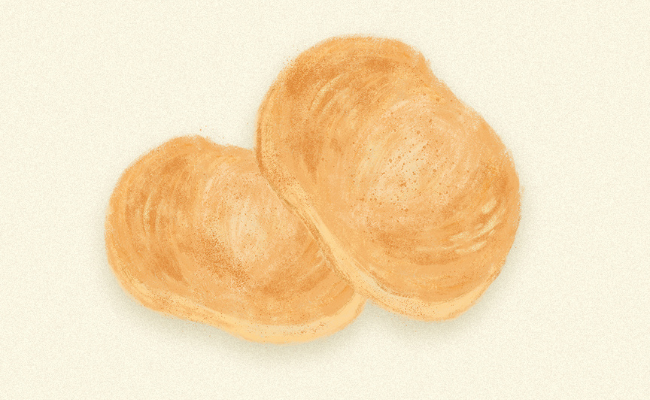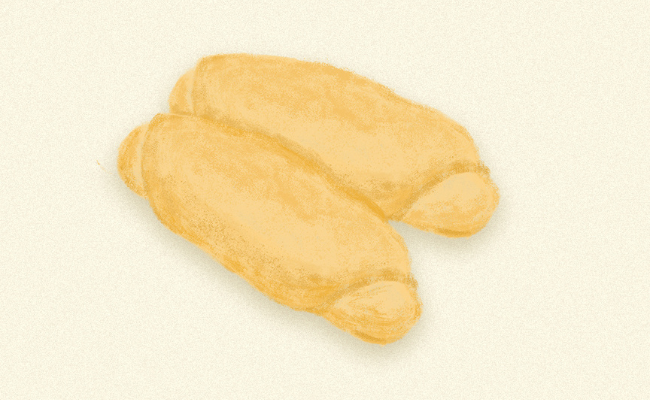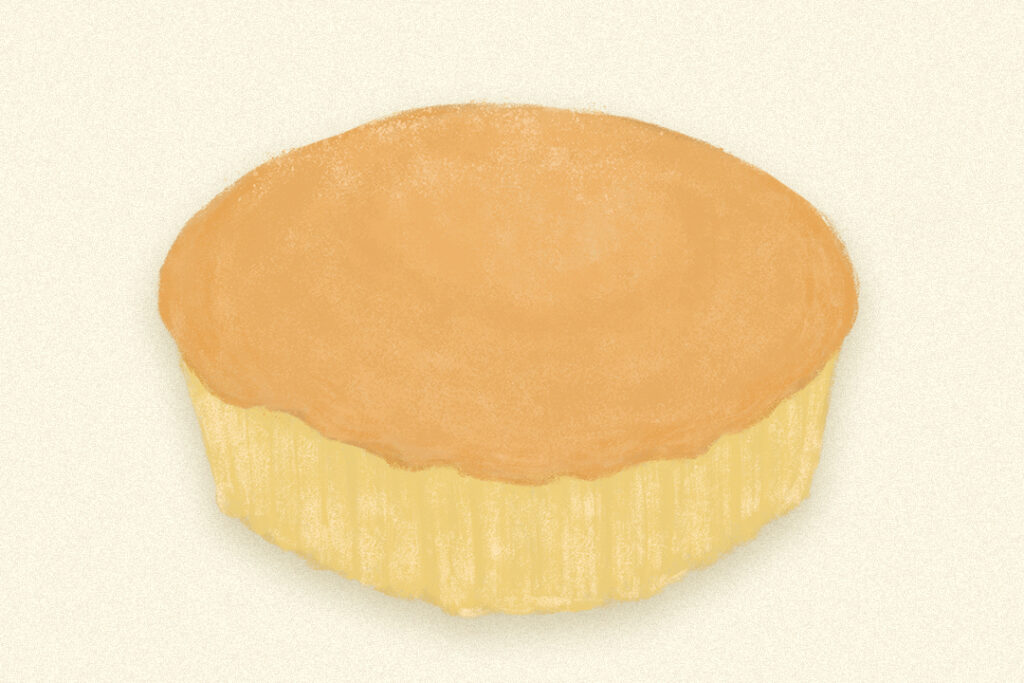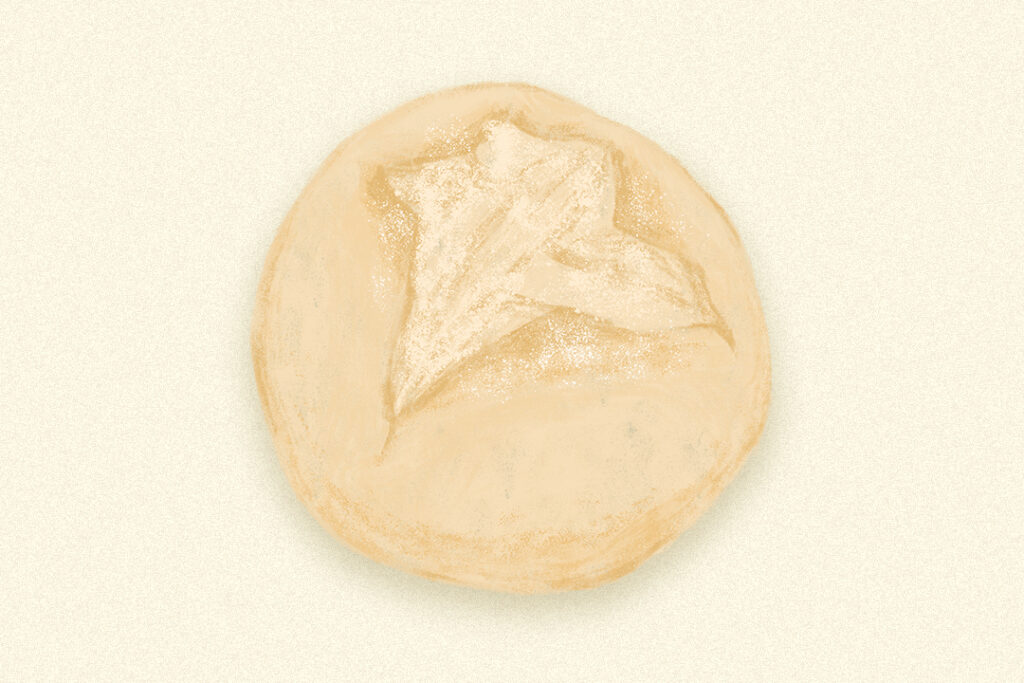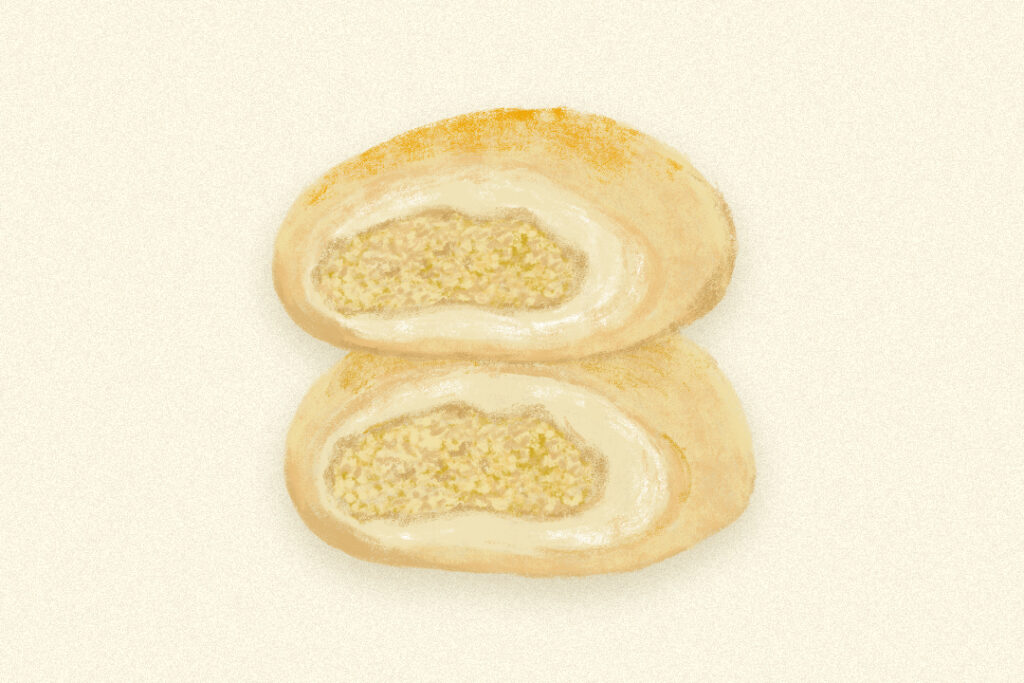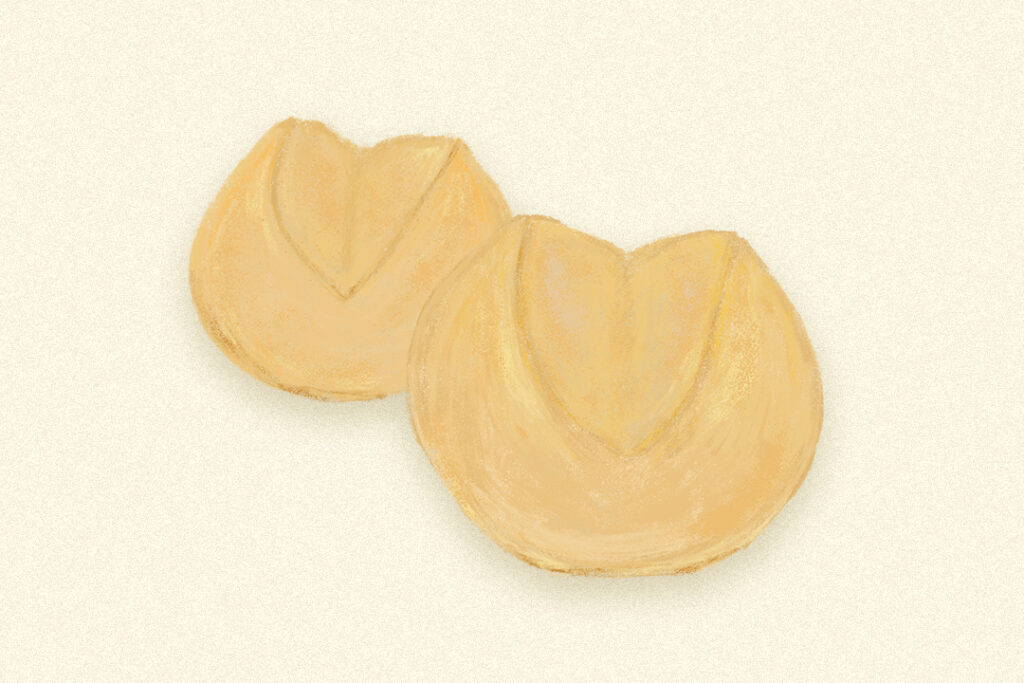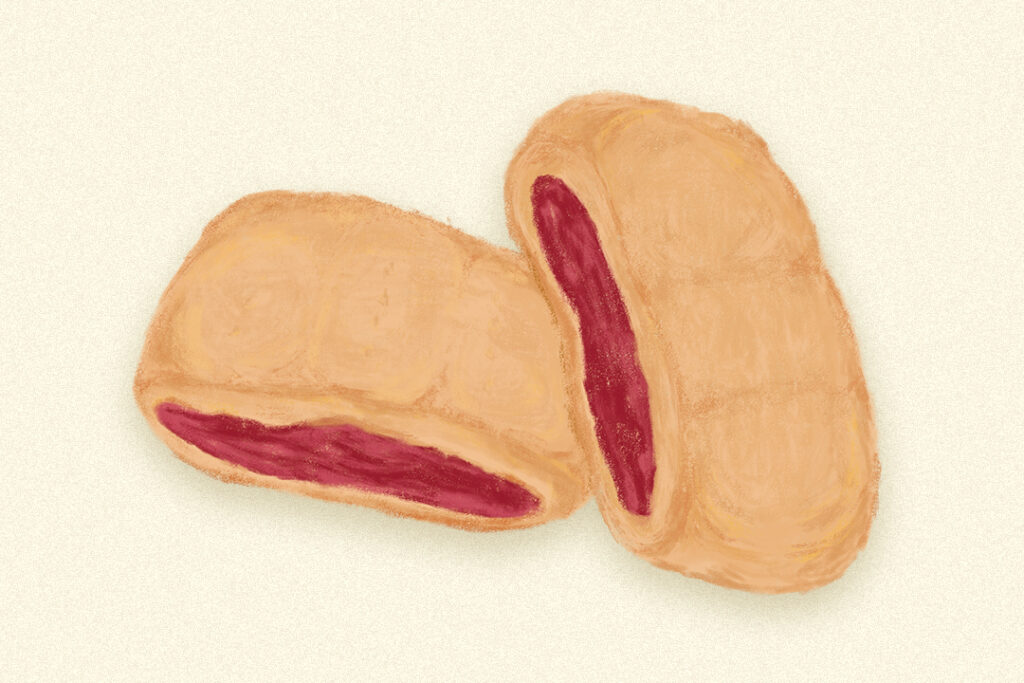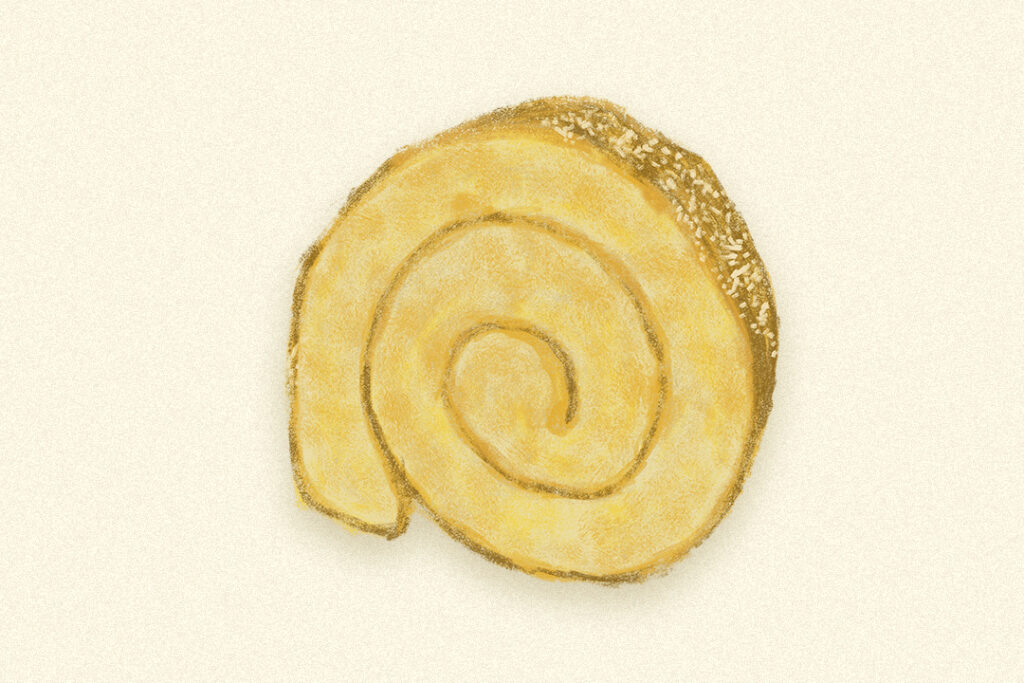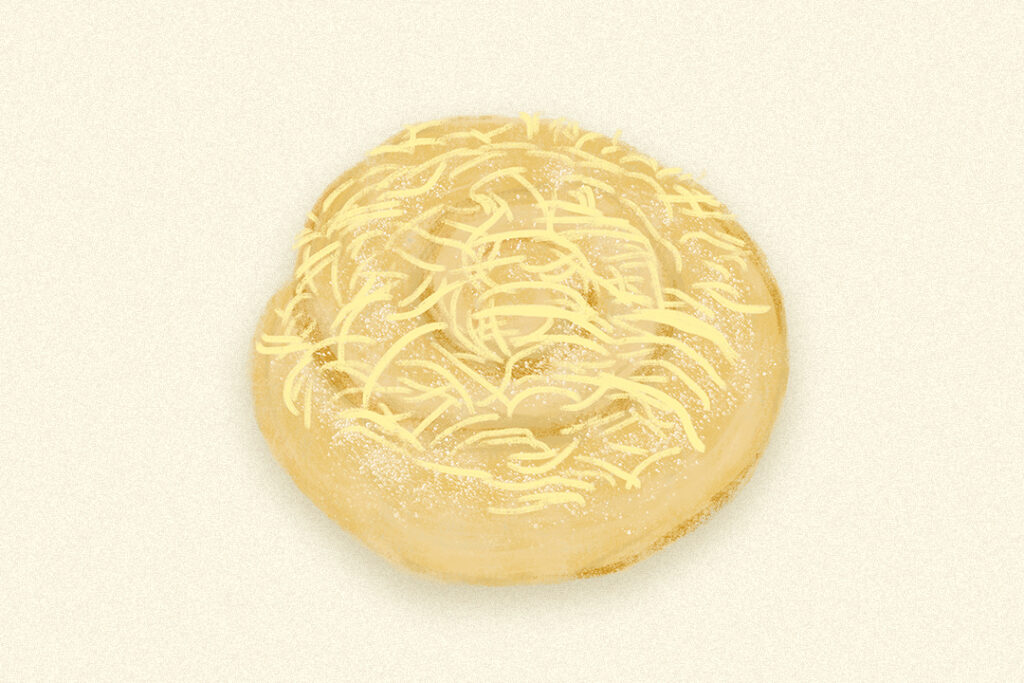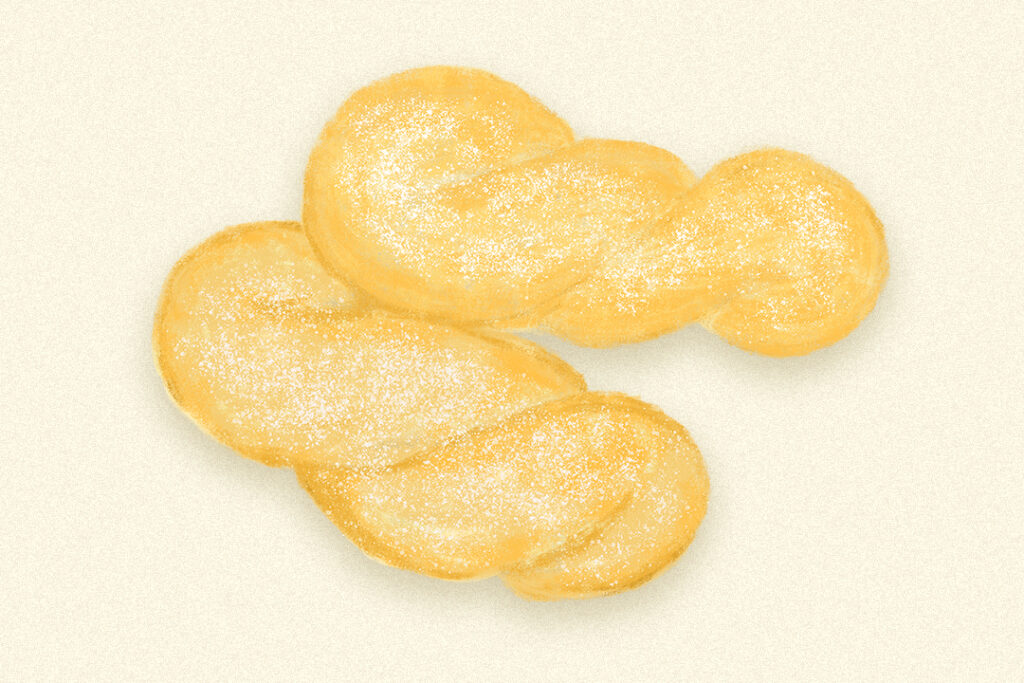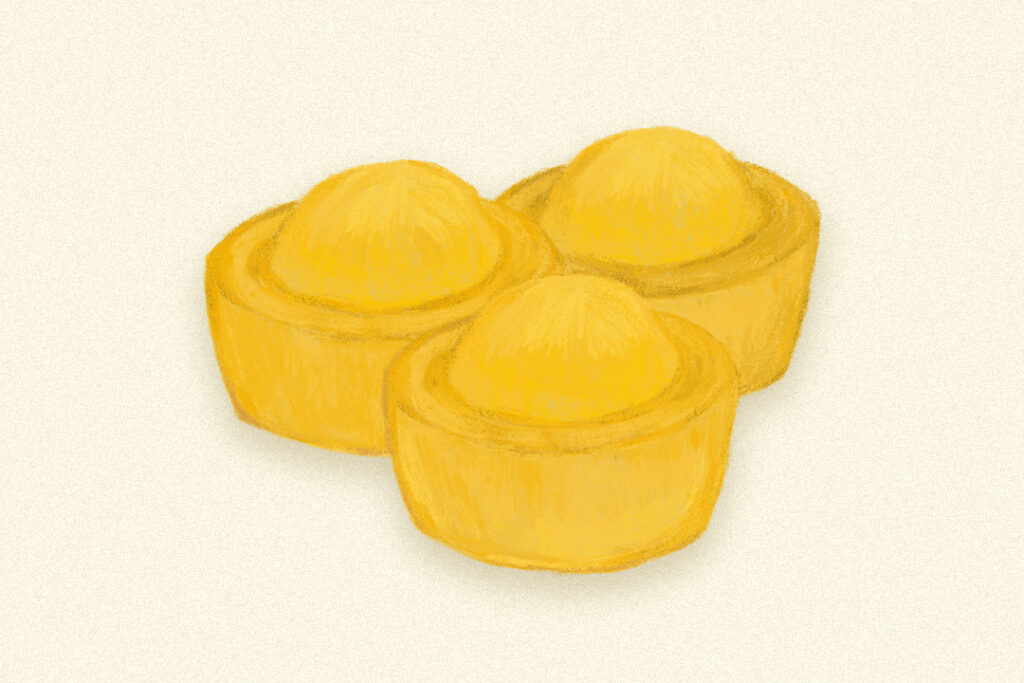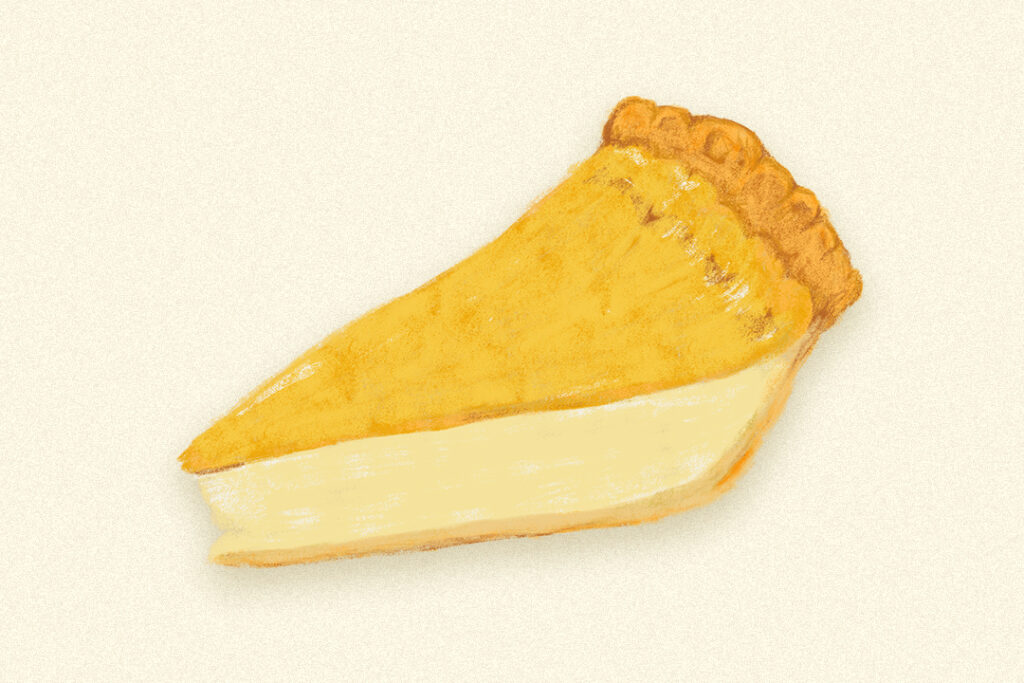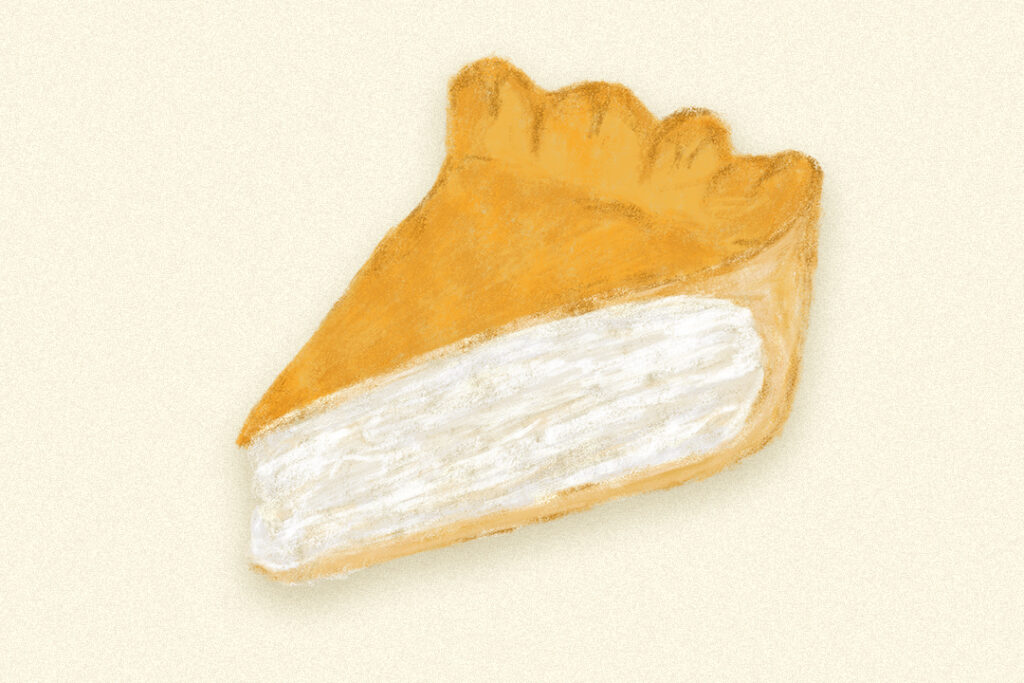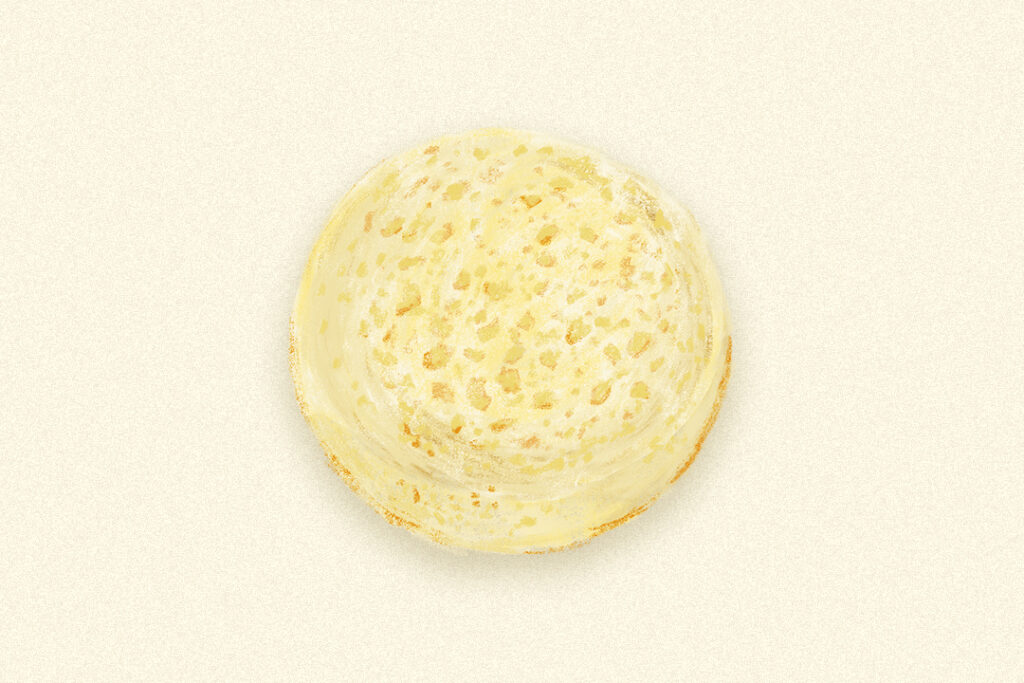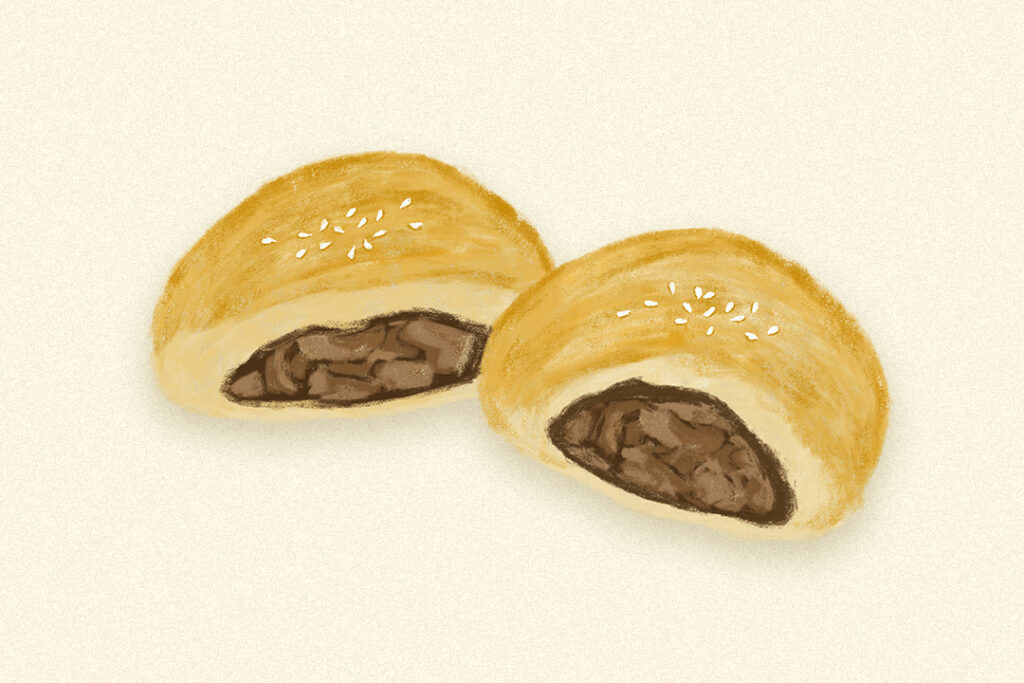A visual guide to Filipino bakery staples
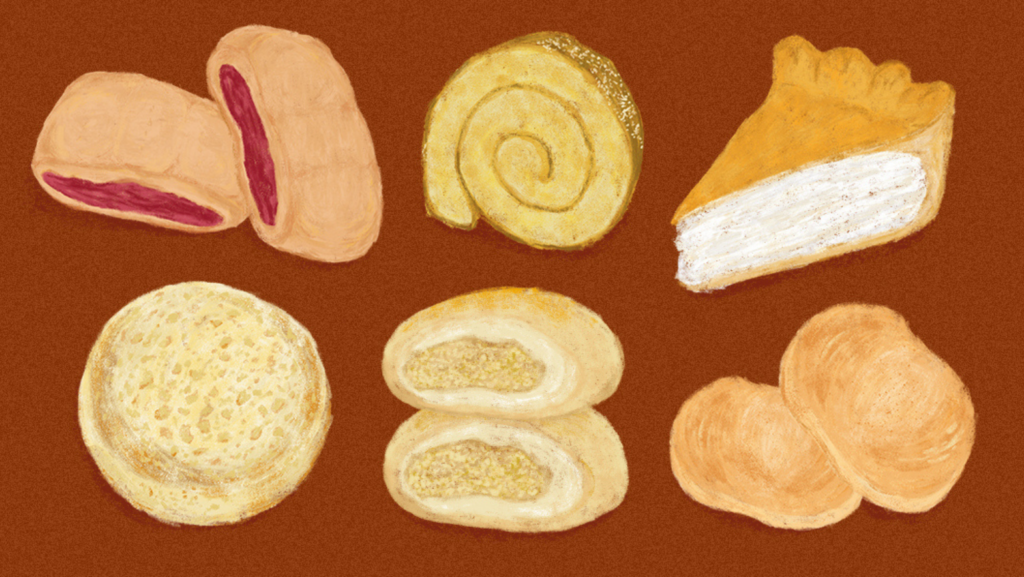
Art by Ella Lambio
The Filipino bakery is a venerable institution that exists on (almost) every street corner in every city. One of the most distinct smells balikbayans miss from their time in the motherland is likely to be passing by a bakery in the early hours of the morning with the scent of freshly baked bread lingering in the air.
While it may be easier to get certain breads like pandesal in places like the United States and Canada these days, not every Filipino bakery has the full cast of crumby characters. They may have pandesal, but other favorites like pianono or pan de regla may not be on the list.
In case you’re visiting the Philippines anytime soon (or just want to take a craving-filled walk down memory lane), here’s a visual encyclopedia of the common types of breads you’ll see at Filipino bakeries.
Pandesal
Filipinos have pandesal if the French have baguettes and Americans have white, sliced bread. It’s the most common type of bread in the Philippines and its name translates to “bread of salt,” which is also a short story by prolific Filipino writer NVM Gonzalez. It’s a light, fluffy bread roll covered in a bread crumb coating and is usually a little sweet and served for breakfast.
Spanish bread
Spanish bread is a type of sweet bread roll covered in breadcrumbs and filled with sugar, breadcrumbs, and either butter or margarine. It’s a favorite among both young and old, and is perfect for afternoons with a cup of coffee or tea.
Mamon
Mamon isn’t a type of bread. It’s actually a sweet, single-serve sponge cake that’s typically packed as an afternoon snack for kids. It’s also common fare in meetings and get-togethers like prayer circles and funerals.
Putok or star bread
Putok, also known as star bread, is a type of denser bread roll made with all-purpose flour. It’s topped with powdered sugar and characterized by the star-shaped pattern on its crown (hence the name). The pattern can also look like the bread exploded in the oven, which is why people also call it putok.
Pan de coco
Pan de coco is another soft bun, but this time, with a coconut sugar filling. It’s a typical afternoon snack or “merienda” food that’s usually served with coffee. It’s also a childhood favorite among many Filipinos.
Monay
Monay is a type of bread roll, characterized by the slit in the middle that divides the bread into two puffy tops. It’s denser and heavier than the other bread rolls, which makes it more filling and a go-to choice for people who are too busy for a meal.
Pan de regla, kalihim, or pan burikat
Pan de regla is another type of Filipino bread roll that’s characterized by its bright red filling made with leftover bread scraps, egg, sugar, vanilla, and milk. It’s a sweet and sometimes chewy pastry, thanks to its filling.
The funny thing about this bread, though, is its name. It’s called different things in different places. “Pan de regla” translates to “menstruation bread” in English, which is due to its menstrual pad shape (and maybe color as well). In the Visayas region, it’s called “pan burikat” or “pan de burkat,” which means “prostitute bread.”
Pianono
Filipinos love their sweets, and the pianono is one of the most staple sweets we have. The pianono is a rolled sponge cake with a sweet filling, typically made with sugar, butter, or some type of jam. It’s usually prepared in smaller portions, meaning you can typically finish one roll in a bite or two.
Ensaymada
Aside from pan de sal, ensaymada is probably one of the most recognized types of breads in the Philippines. It’s a soft, fluffy roll topped with sugar, butter or margarine, and liberally sprinkled with lots and lots of cheese.
You may also like: 5 easy ube desserts you can make at home
Bicho bicho
To most people, donuts are round and either dipped in or topped with some kind of frosting. Bicho bicho is different. The pastry is a Filipino-style twisted donut made with yeasted dough and covered in sugar.
Some versions are made with glutinous rice flour to make it extra dense and chewy. In other places in the Philippines, the pastry is called “shakoy.”
Kababayan
A kababayan is a type of sweet, crumby muffin with a distinct golden color. It’s named after the Filipino word for “countrymen,” and is a treat often enjoyed for breakfast with a steaming mug of coffee. It also takes the shape of a salakot, which is a type of hat farmers wear to protect themselves from the sun.
Bonete or pambonete
Pambonete or bonete is a type of Filipino bread roll that’s denser on the outside with a soft and fluffy interior. It’s especially popular in places like Batangas and Quezon. It’s called a pambonete because it resembles a bonnet or a chef’s hat.
Egg pie
Egg pies are another popular Filipino bakery staple. It’s more reminiscent of a Chinese-style egg pie rather than its Portuguese counterpart because of its crumbly crust. The egg pie itself isn’t usually too sweet, but very silky in texture.
Buko pie
The Philippines is a tropical country with an abundance of coconuts, so buko pie is one way of making use of that abundance. The flesh of a young coconut is scooped out and mixed with a sweetener, usually condensed milk, and baked into and topped with a pie crust. It’s a sweet, refreshing treat people go crazy for.
Cheese bread
Cheese bread is as straightforward as it gets. It’s a type of Filipino bread roll topped with a cheesy crust that crunches up once baked. It’s a little sweet, a little savory, and a crowd favorite.
Asado roll
An asado roll is what happens when you take two Filipino favorites and make one delicious bun. This type of bread is the Filipino version of a pork bun. The filling is made with pork asado or Chinese-style sweet pork, and the bun is usually a variation of a soft roll. It’s also known by names like baked siopao and meat bun, and is usually served at functions like funerals or meetings.

